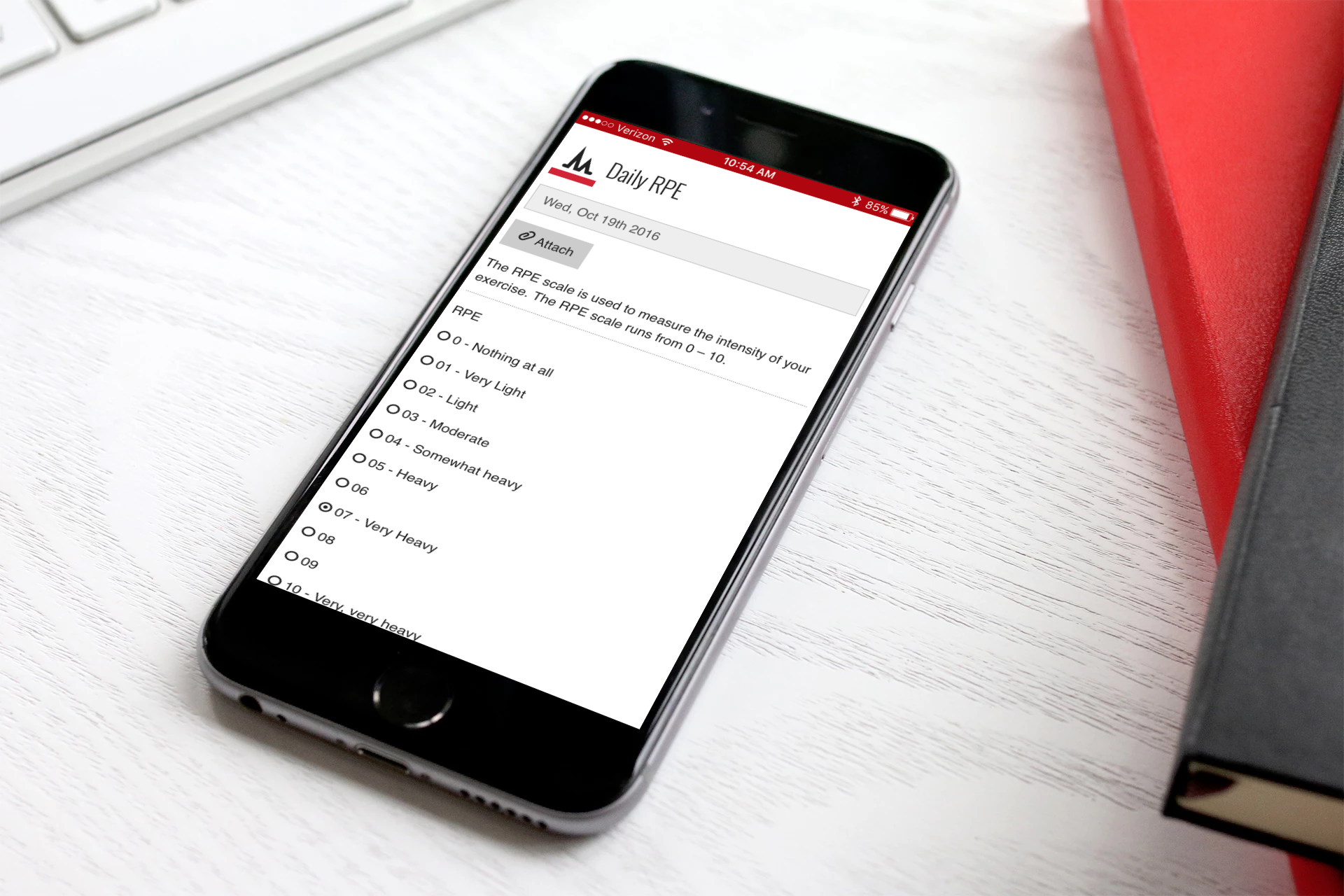“Concentration and mental toughness are the margins of victory.”
– Bill Russell, Boston Celtics, 11-time NBA Champion
What Is RPE?
Physical and mental preparation and training undoubtedly play a significant role in athletic performance. As with any type of training, it’s important for athletes and coaches to consistently perform self-assessments during a grueling season to monitor physical and mental condition to ensure peak performance.
Rate of Perceived Exertion (RPE), also known as the Borg Scale, is a tool used to measure the intensity of a workout based on an athlete’s subjective experience. In other words, it’s essentially asking your athletes, “How much effort did it take to complete that workout or practice?”
Originally, the Borg Scale was based on a scale of 6-20 that was aimed at corresponding to heart rate zones. For example, on this scale a moderate intensity workout would receive a 12-14 rating, which when multiplied by 10, would put an individual’s heart rate at 120-140 beats per minute (bpm). A score of 18-20 (i.e. heart rate of 180-200bpm) would report maximal effort was required to complete a workout.
To make it simpler, a modified version of RPE evolved to a 1-10 rating scale. This is the scale we most commonly see with teams using DRIVN.
Many teams that use the DRIVN data-tracking capabilities are choosing to track Daily RPE to gauge how difficult a workout or practice was on any given day. In particular, we’ve seen strength coaches utilize this scale in order to tailor in-season workouts to prevent overtraining or injuries.
How Teams Utilize RPE
It may seem difficult or daunting to implement RPE tracking if you’ve never done so before.
However, RPE is a very valuable and easily utilized tool to track players’ progress throughout a long season with many highs and lows.
So how do DRIVN teams track RPE?

After a workout or practice, players simply open the DRIVN app, report their RPE score by choosing how hard they found the workout on a scale of 1-10, and clicking submit. This tracker is visible only between the athlete and the coaching staff; athletes are not able to see each others’ scores. As soon as athletes report their RPE, this information is instantly accessible to coaches.
Download our RPE White Paper & learn more.
Coaches use this data in a variety of ways, but the most common practice is to average all the players’ RPE scores to get a team average score. This allows the coaching staff, at a very quick glance, to be able to see on a scale of 1-10 how the team is feeling leading up to the next workout, practice or game. Some teams further break down the information by looking at individual athlete scores in case there are any outliers they may need to be concerned about.
The difference between winning and losing is often extremely small. Seemingly simple tasks and habits done consistently over time lead to significant improvements in individuals and teams. We aim to make that easier for every athlete and every team.
As wearables and enhanced technology become more commonplace in athletics, RPE remains a simple, yet highly valuable tool for athletes to perform physical and mental self-assessments and to gauge overall team performance.
Want to learn more about how your team can use RPE to its advantage? We’ve got you covered. Click here to download our RPE White Paper and learn how RPE is a valuable tool that can take your team’s performance to the next level.
{{cta(‘243f4837-9594-4217-82ba-36e258b85ba6’)}}
